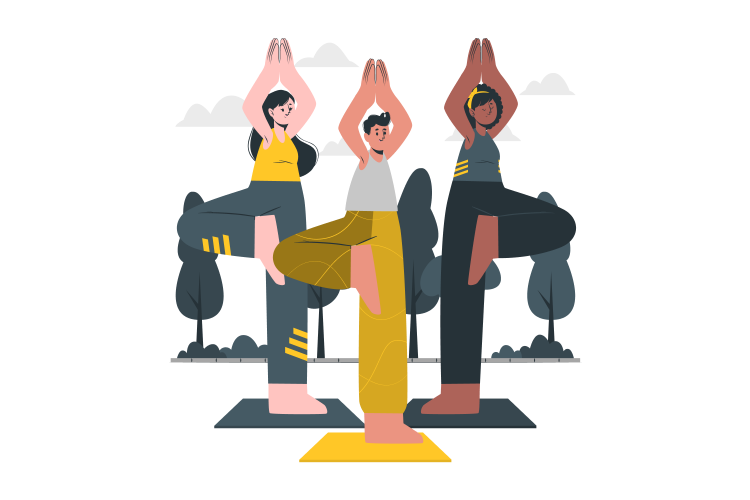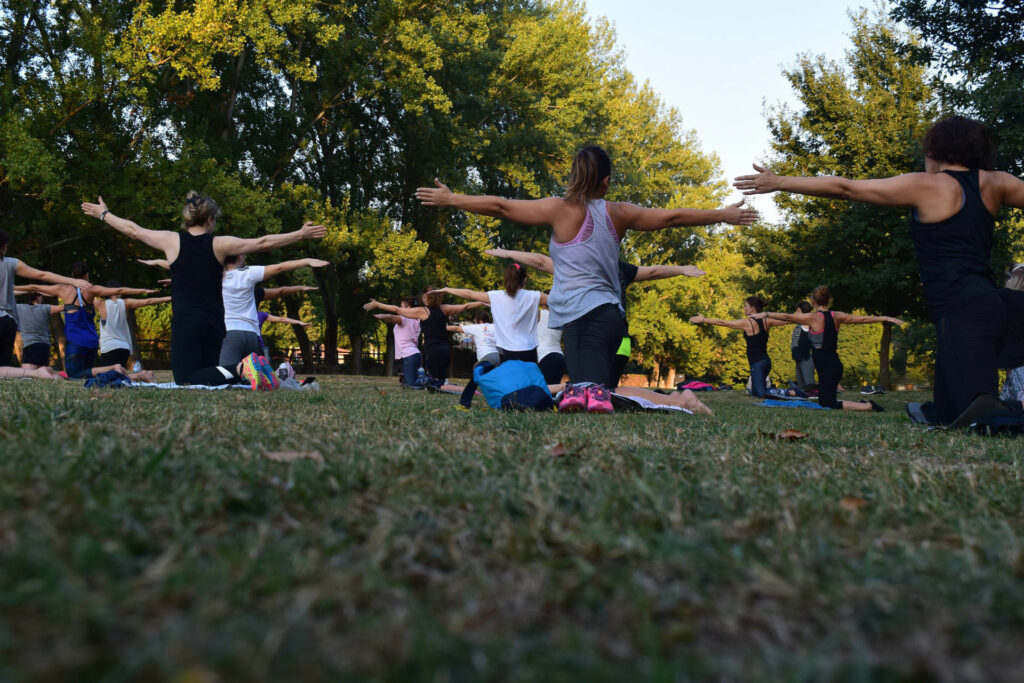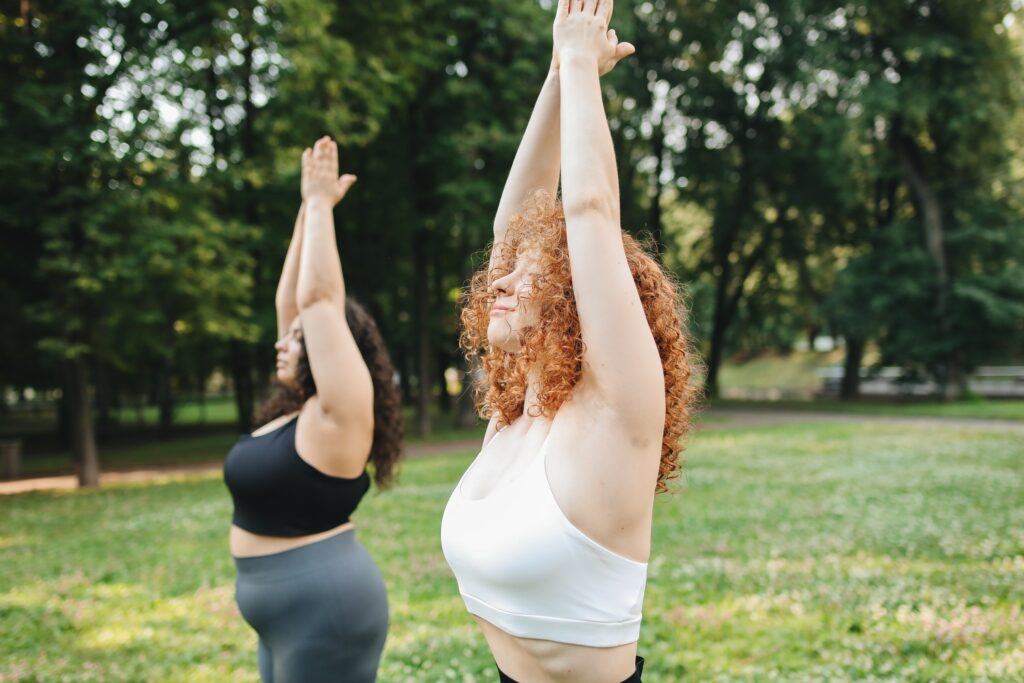Management · 9 min read · 21 Dec 2021
Yoga and pain
Yoga can be a valuable tool for the management of pain. Find out more about the benefits of yoga for pain and how to get started with a yoga practice.

Yoga can be a valuable tool for the management of pain. Find out more about the benefits of yoga for pain and how to get started with a yoga practice.

Yoga is a diverse system of practices and philosophies that originate in India. Most popular are the physical postures (asana) and breathing techniques (pranayama). Yoga is a popular form of exercise, stress reduction and self-care and a great tool for managing chronic pain.
Anyone can practice yoga. It is found in gyms, yoga schools, hospitals, prisons, childcare centres, and maybe even your living room!
Yoga works on the connection between the mind and body and this is why it can be helpful for pain. Yoga uses stretches, balances, breathing techniques and relaxation to calm our nervous system.
A regular yoga practice can act like a mental health circuit breaker! It helps us get out of a negative headspace, improves our mood and empowers us to find ways to move that feel good.
Researchers have found all sorts of benefits of yoga for back pain, period pain, neck pain and headache. Much of the research is still emerging and we need to know more about its effects on young people. Yoga is a like a mental health circuit breaker.

People practice yoga for all sorts of reasons. Some people because they want to be fit, strong and flexible. Other people practice because yoga helps them manage their stress, depression or anxiety.
Some people practice for spiritual reasons because yoga helps them feel like they have a deeper connection to what is important to them in life and enhances their wellbeing. Many people who experience anxiety or trauma practice yoga to improve their mental health.
Sometimes when we think of yoga, we think of super bendy people in pretzel shapes!
But yoga is much more than just making shapes with your body. It is a form of moving meditation that can strengthen the connection between your mind and body, which has positive effects on your pain.
Yoga is now widely accepted as a helpful complementary part of pain care, alongside care from your Physiotherapist, Doctor, and Psychologist and health team.
There are many types of yoga and different techniques within these. One of the main practices in yoga is the practice of asana. Asana is the physical form of yoga, which includes thousands of different positions, some of which are gentle and some of which are strong. The good thing is yoga is not a competition or sport.
Yoga also includes working with the breath (pranayama). Simple techniques like breathing in for a set count, or breathing out for a set count are used. This has amazing effects on your nervous system. Some researchers think controlled breathing can change your life for the better.
The changes that come about in our nervous system through controlled breathing can help our mood and mental health, which then positively impacts our pain. Just remember you should never feel breathless, dizzy or uncomfortable during yoga breathing.
Yoga also includes meditation (dhyana). We have a whole section on meditation and mindfulness you can read about too.
An important part of yoga that not everyone knows about is the lifestyle guidelines that form the foundations of yoga. These are called the Yamas and Niyamas. They can help guide our speech, thoughts and actions. Some people even think they are the trickiest part of yoga! In a way they are, because they are about our inner world.
For example, the first Yama is Ahimsa. Ahimsa means non-harming. We often are great at being kind to our friends and family but we are not always kind to ourselves. Ahimsa is not just about not harming other people, it is also about recognising the harm we do to ourselves. When we are unkind to ourselves it can have negative impacts on our pain because of the mind-body connection.
For example, if you pay attention to your thoughts, you may notice sometimes you don’t speak to yourself in a kind and compassionate way. Maybe your thoughts tell you that you’re not good enough, smart enough or loveable.
These sorts of thoughts (which most of us have) aren’t helpful, true, or good for your pain. So, you can practice Ahimsa by being compassionate towards yourself and this can have a positive impact on your wellbeing and your pain.
Next time you notice an unkind or self-critical thought try this:
Yes, yoga is suitable for everyone, however, you just need to speak to your healthcare providers and the yoga teacher before attendance.
There are many different styles of yoga and not all classes will be suitable for you at this point in your life. If you have more specific needs then start with a private class, ideally with a Yoga Therapist.
Lots of people start yoga on YouTube! But if you have pain, this is generally not recommended.
First talk to your health care provider and then find a well-trained teacher you trust. Most important is to start off slow and remember that for yoga to be effective it must be practised regularly with awareness.
When choosing a teacher or class, remember that yoga is currently an unregulated industry. This means that anyone is able to call themselves a yoga teacher and it is hard to know who would be the best teacher for you. A good place to start looking is Yoga Australia, a volunteer organisation that upholds high standards for Yoga Teachers.
Consider seeing a Yoga Therapist, to find an individual practice that fits your needs.
Yoga Therapists have more specialised training and are better positioned to give individual advice. Choose a Yoga Therapist registered with either the International Association of Yoga Therapists or the Australasian Association of Yoga Therapists.
The following video is a short, gentle chair class with meditation to give you a taste of yoga.
You may like to try this short practice. If you wish to start a regular yoga practice, please ensure you see a yoga teacher registered with Yoga Australia, or a Yoga Therapist.
Talk to your health care provider before you start yoga
Choose a teacher who is experienced and encourages and supports you to do what feels good
Yoga can help your physical and mental health – you do need to practise regularly with awareness
Start off slow and listen to your body
A lot of yoga classes focus on the physical postures, but meditation and breathing are just as important
Yoga is not a competition!
There are many different styles of yoga and types of classes, so see what suits you best
If you have concerns talk to your health care team about your yoga practice

Here are some helpful apps and websites to help you track your pain and set goals to increase your level of physical activity. Alternatively, if you want to talk to someone, please seek further assistance.